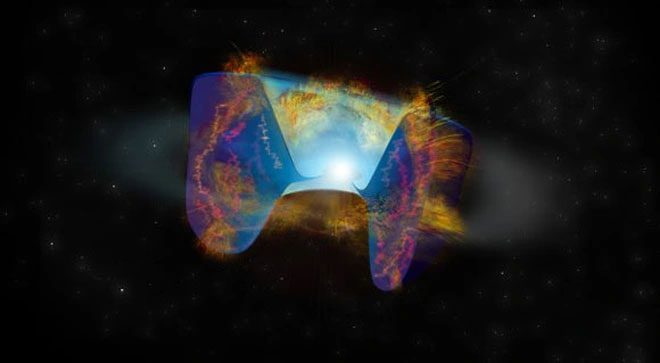A compact cosmic “bomb” spiraled deep into the core of another star, resulting in the formation of supernova VT 1210 + 4956, sending powerful radio signals back to Earth’s observatories.
According to Sci-News, theoretical astronomers had predicted this event, but it is the first time a telescope has captured such a spectacular moment.
VT 1210 + 4956 was previously a binary system, consisting of one star and a neutron star or a small black hole. This neutron star or tiny black hole acted like a “terrifying cosmic virus”, attacking its companion star by penetrating through its layers and reaching the core before exploding.

Strange supernova recently discovered through unexpected radio signals – (Image: VLASS).
The result was a powerful supernova explosion from the companion star, emitting strong radio waves. These radio signals were collected by the VLA telescope of the NSF, located in New Mexico, as part of the VLASS sky mapping program.
A research team led by astronomer Dillon Dong from the California Institute of Technology (Caltech) used the Keck Observatory telescope in Hawaii to further investigate the bright radio signals and trace the cause of the explosion.
Neutron stars or black holes are typically remnants of a supernova – the final product when a star dies and undergoes multiple collapses. They are known as some of the most aggressive objects in the universe, but an attack like this on the companion star is an incredibly rare phenomenon.
It is estimated that it penetrated the atmosphere of the companion star about 300 years ago. Upon reaching the star’s core, it disrupted the nuclear fusion reactions that produce the energy required to prevent the core from collapsing under its own gravity. This disruption led to the explosion.
After the supernova, what remains will either be another black hole or a neutron star.
The study has been published in the journal Science.





















































